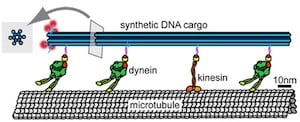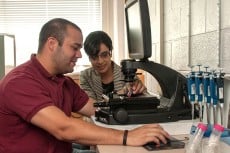Large molecular cages constructed from metal-organic frameworks have set a record for the greatest surface area in the least mass.
Metal-organic frameworks (MOFs) are back in the news again. A few months ago we cited the use of MOFs by Canadian chemists to self-assemble a molecular wheel on an axis in a solid material. More recently chemists at Northwestern University have used MOFs to set a world record for surface area. From “A world record for highest-surface-area materials“:
Northwestern University researchers have broken a world record by creating two new synthetic materials with the greatest amount of surface areas reported to date.
Named NU-109 and NU-110, the materials belong to a class of crystalline nanostructure known as metal-organic frameworks (MOFs) that are promising vessels for natural-gas and hydrogen storage for vehicles, and for catalysts, chemical sensing, light harvesting, drug delivery, and other uses requiring a large surface area per unit weight.
The materials’ promise lies in their vast internal surface area. If the internal surface area of one NU-110 crystal the size of a grain of salt could be unfolded, the surface area would cover a desktop. …
MOFs are composed of organic linkers held together by metal atoms, resulting in a molecular cage-like structure. The researchers believe they may be able to more than double the surface area of the materials by using less bulky linker units in the materials’ design. …
Beyond their near-term practical applications, Eric Drexler has cited MOFs as potentially useful building blocks in the molecular machine path to molecular manufacturing. Near-term applications may drive the technology development to produce more choices for molecular machine system components.
—James Lewis, PhD






